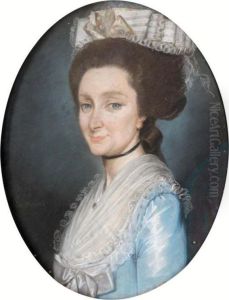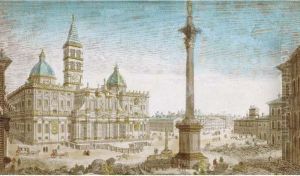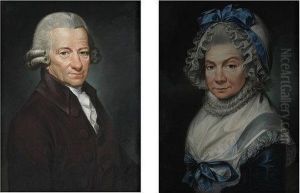Jacques Gabriel Huquier Paintings
Jacques Gabriel Huquier was a French artist, engraver, and publisher who played a significant role in the European art scene of the 18th century. Born in 1715, Huquier was a prominent figure in the Rococo movement, known for his intricate and decorative style that captured the elegance and frivolity of the period. He was not only an accomplished engraver but also a talented painter, although it is his engravings that have garnered the most historical attention and acclaim.
Huquier's work often involved the reproduction and dissemination of contemporary and past artworks, making significant contributions to the spread of artistic styles and tastes across Europe. He was particularly noted for his collaborations with other artists, engraving their works and thus playing a crucial role in the art market of his time. His engravings included a wide range of subjects, from portraits and landscapes to scenes of daily life and fantastical subjects, reflecting the diverse interests of the Rococo period.
One of the distinctive features of Huquier's career was his ability to blend artistic skill with entrepreneurial spirit. He established a publishing house in Paris that became a hub for the production and distribution of engravings. Through his publishing activities, Huquier helped to democratize art by making high-quality reproductions available to a broader audience, beyond the aristocracy and affluent collectors who could afford original works. This contributed to an increased public interest in art and an expansion of the art market during the 18th century.
Despite his success, details about Huquier's personal life remain relatively obscure, and his work has often been overshadowed by that of more famous contemporaries. Nevertheless, his engravings continue to be studied and appreciated for their aesthetic quality and historical significance, offering insights into the cultural and artistic trends of the Rococo era. Jacques Gabriel Huquier passed away in 1805, leaving behind a legacy as a key figure in the history of French engraving and the broader European artistic landscape of his time.


